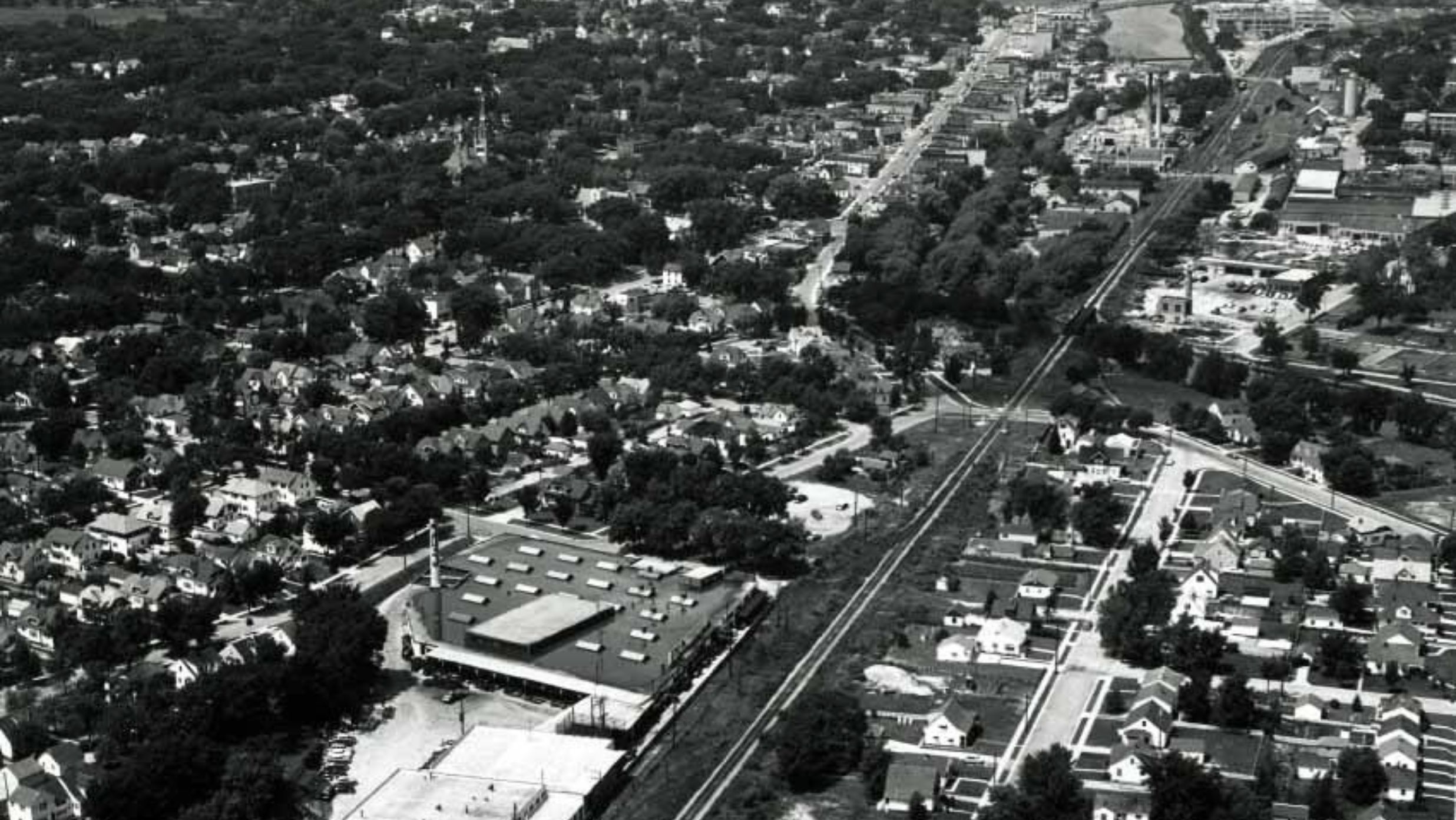Picture this:
You’re biking along the Eisenbahn State Trail on a cool summer’s night. Light filters through overhead tree branches. You pass a couple talking on a bench. A girl rollerblades past you. Two dogs lounge in their backyard, watching people pass by. You can hear the rush of the Milwaukee River.
Not all that long ago, this scenery was drastically different.
Let me take you back to the Eisenbahn State Trail in 1800…
At this time Washington County was a region of untamed wilderness. Slowly, bold settlers worked to gain a foothold in the region. Discovering the promising natural resources, more and more settlers began to arrive. Communities developed – and just like that – Washington County was a well-established region.
The “Air Line”
Forever changing the economy, industries, and transportation of Washington County, was the construction of the railroad. Today, we’ll be talking about one specifically: the Chicago and Northwestern Railway (or the C&NW). Hailed as the ‘Air Line’ for its speedy travels between Chicago and Green Bay, the C&NW delivered business and opportunity to Washington County.
It started out as a single main line between Milwaukee and Fond du Lac that was built in 1873 by the Northwestern Union Railroad. In 1893, this merged into the Chicago and Northwestern Railways. The C&NW was one of the most extensive railways in the Midwest.
View an official map of Wisconsin’s railroads from 1900
West Bend: The City of Varied Industries
It’s evident that Washington County’s industries thrived from the railroad’s presence. Considering the community is located east of the Milwaukee River, between major cities like Chicago, Milwaukee, Fond du Lac, and Green Bay, it was an ideal location for manufacturing. (Think about the West Bend Aluminum Company, the Enger-Kress Pocketbook Company, Amity Leather Products, and Gehl Bros. Manufacturing Company – just to name a few!)
Because of the railroad, these companies conducted business on a nationwide, and even global, scale. Hence, how West Bend became known as ‘The City of Varied Industries.’
Local Train Depot
Right away, the C&NW railroad built a train depot in West Bend, serving as a central access point for Washington County. Between passengers and shipments, there was continual action at the depot. So much, in fact, that the depot needed to be rebuilt to better accommodate the influx of passengers.

Manufacturing: Derailed
Fast forwarding a few decades, during World War II and the Korean War, the many industries of Washington County became war material manufacturers. Businesses like the West Bend Company set aside current endeavors to aid the war effort. This brought a surge in product shipments via railway while passenger travel for military personnel boomed.
Letting off Steam
As the 1960s began, war-related traffic declined. Washington County’s community evolved to become a retail, financial, and educational hub.
In addition to freight, the C&NW transported people. Each passenger train stopped in West Bend. There were four running in each direction Monday through Saturday, and two in each direction on Sunday. Passenger travel began to decline with the increasing competition from automobiles and aviation. Especially after the government gave large subsidies to support airport and highway development.
C&NW finally ceased passenger fair through West Bend in 1971.
So why is it called the ‘Eisenbahn?’
In 2000, the railway was abandoned. The ties between Eden and West Bend were pulled up to make way for a bike trail, to be named ‘Eisenbahn,’ which is German for ‘Iron Road’ a tip of the hat to Washington County’s rich German heritage.
Washington County completed the construction of the trail and bridges in 2006 and officially opened it to the public. In 2007, 5 miles of the trail, from Rusco Road to Barton, was paved.

View a current map of the Eisenbahn State Trail from the DNR
Parting Words
Today, the Eisenbahn State Trail comprises 25 miles of cycleway. It begins in West Bend, winding through Washington County and up into Fond du Lac County, eventually ending at the village park in Eden. The trail is cared for by the counties, and enjoyed by the community year-round. From train tracks to cycleways, this path has been an irreplaceable fixture of Washington County.
References
Eisenbahn State Trail. Wisconsin Department of Natural Resources.
Railroad Commission of Wisconsin. Official Railroad Map of Wisconsin [map]. 1910. 1:633,600. “Official Railroad Map of Wisconsin: 1910.” Wisconsin Historical Society. Last updated February 2015.
Polzar, Devon and Hilton, Mark. “Eisenbahn Trail History.” The Historical Marker Database. December 16, 2019.
Yesterday and Today; A history of the Chicago & Northwestern Railway System. Chicago, 1910. Hathi Trust Digital Library.
All photos are sourced from the Washington County Historical Society’s Research Center
You Make Our Work Possible!
Community support allows us to continue telling Washington County’s stories. We invite you to become a member and consider making an additional gift of support. Contact us about sponsorship opportunities for local businesses as well.





